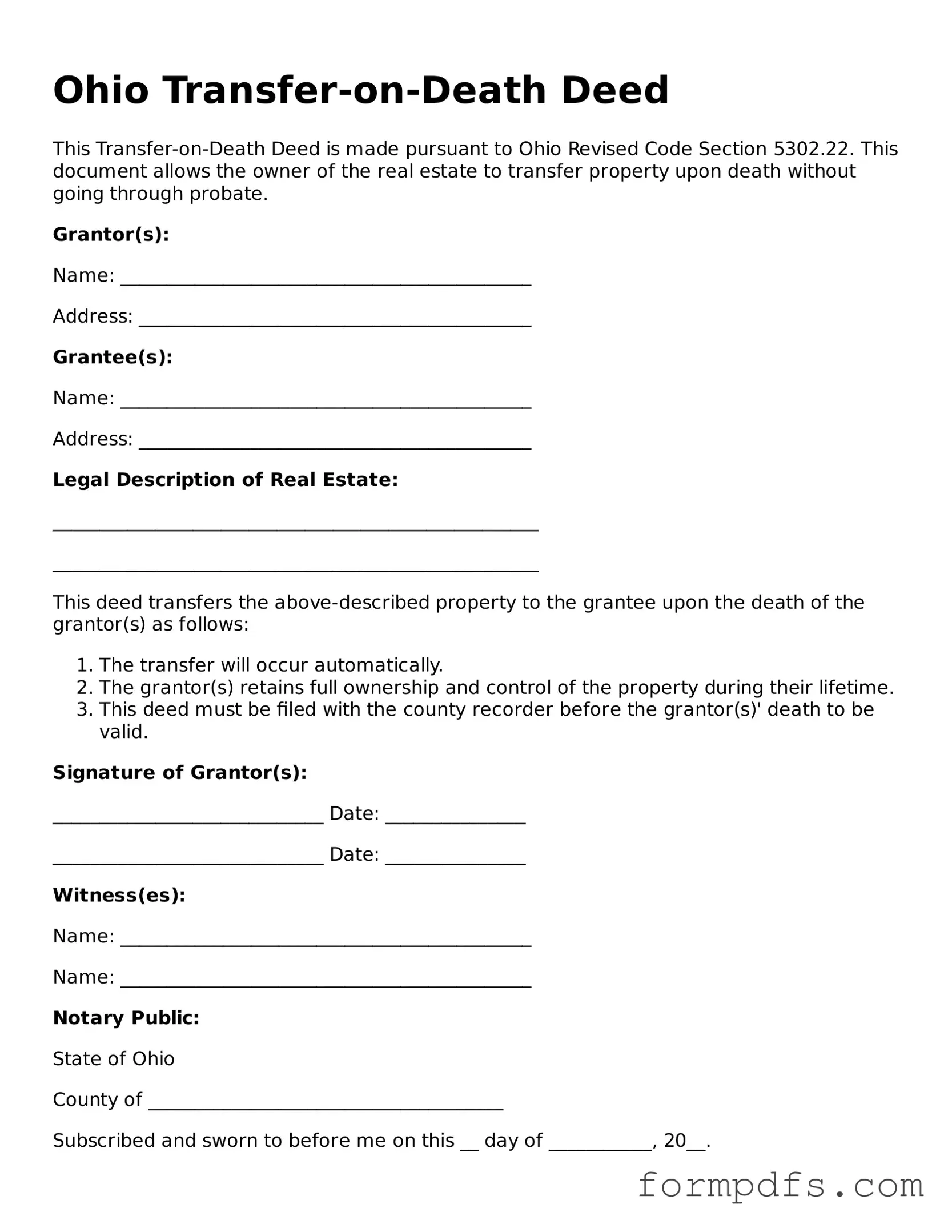What is a Transfer-on-Death Deed in Ohio?
A Transfer-on-Death Deed (TOD) allows property owners in Ohio to transfer real estate to beneficiaries upon their death without going through probate. This deed is a straightforward way to ensure that your property passes directly to your chosen beneficiaries, simplifying the transfer process and reducing costs.
Who can use a Transfer-on-Death Deed?
Any individual who owns real estate in Ohio can utilize a Transfer-on-Death Deed. This includes homeowners, landowners, and individuals holding title to property. However, it is essential to ensure that the deed is executed correctly to be valid.
How do I complete a Transfer-on-Death Deed?
To complete a Transfer-on-Death Deed, you must fill out the form with specific information, including your name, the names of the beneficiaries, and a legal description of the property. After filling out the form, it must be signed in front of a notary public and then recorded with the county recorder’s office where the property is located.
Can I change or revoke a Transfer-on-Death Deed?
Yes, you can change or revoke a Transfer-on-Death Deed at any time while you are alive. To do this, you must create a new deed that either names different beneficiaries or explicitly states that the previous deed is revoked. This new deed must also be signed and recorded to be effective.
What happens if a beneficiary predeceases me?
If a beneficiary named in your Transfer-on-Death Deed passes away before you, their share of the property will typically go to their heirs, unless the deed specifies otherwise. It is a good practice to review your deed periodically to ensure that it reflects your current wishes.
Are there any tax implications with a Transfer-on-Death Deed?
Generally, there are no immediate tax implications when using a Transfer-on-Death Deed. The property is not considered part of your estate for estate tax purposes. However, beneficiaries may be responsible for property taxes once the transfer occurs, and it’s advisable to consult with a tax professional for specific guidance.
Is legal assistance necessary to create a Transfer-on-Death Deed?
While legal assistance is not required to create a Transfer-on-Death Deed, it can be beneficial. An attorney can help ensure that the deed is completed correctly and meets all legal requirements. This can prevent potential issues in the future and provide peace of mind.
